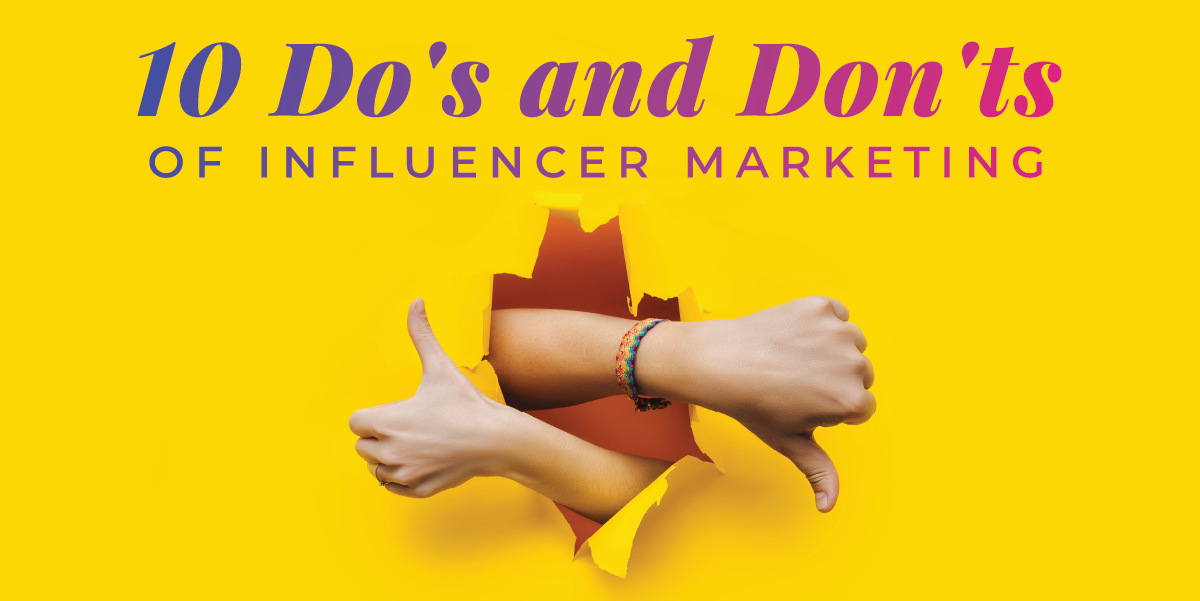With the overall value of influencer marketing now at 13.8 billion dollars, it’s evident that more brands are turning to influencers. However, there are many misconceptions on how to launch an influencer marketing campaign effectively.
To help you excel at influence marketing and maximize the ROI of this powerful tactic, we’ve put together the ten definite do’s and don’ts for your next influencer marketing campaign.
1. Do define your goal.
Campaign goals could be to increase brand awareness, generate sales, or build loyalty with existing customers.
Whatever your brand needs, align your message with your overall goal. Example: If the goal is to drive sales, include a solid CTA in your campaign strategy.
Don’t forget to share this goal with your influencers (more on influencer briefs in # 7). Doing this will build trust in your relationship and allow the influencer to give you unique ideas for your campaigns.
2. Don’t forget the customer.
The customer journey is not a straight road anymore. It’s highly complex and non-linear.
Customers’ touch-points span across different channels, platforms, and content types. Here is an example of a fragmented customer journey of a multiplatform user:
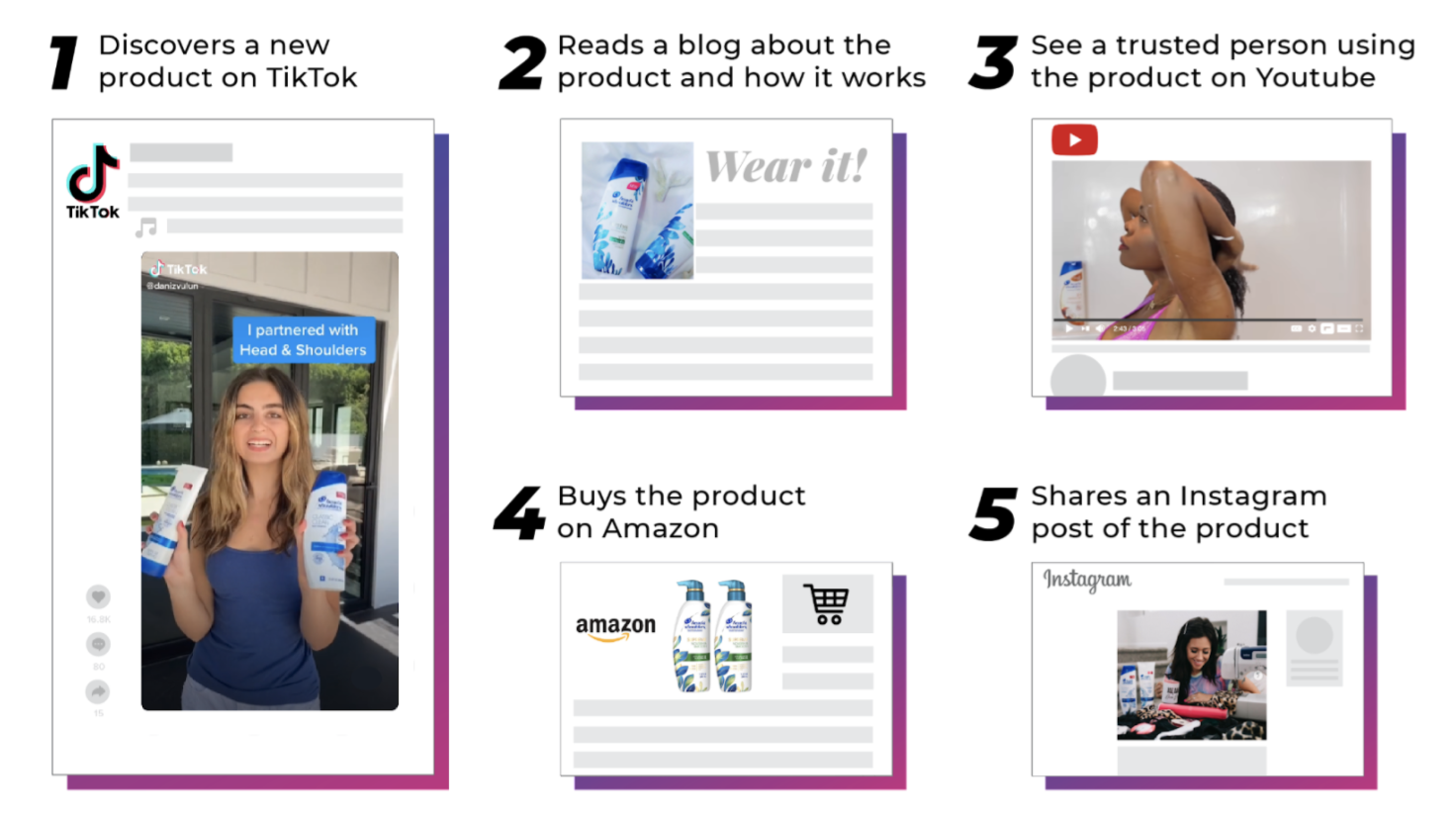
Some things to ask yourself when trying to understand your customer:
- Who are they?
- How do they buy?
- Where do they buy?
- How do they live?
- What do they value?
3. Do pick the right platform.
How do you pick the right platform? This goes hand-in-hand with knowing your customer.
- Where does your audience spend their time?
- Why do they spend their time there?
- How are they using the platform?
Instagram: Most popular, best for aesthetically efficient social validation, brand positioning, audience engagement, and driving to site via Story swipe-ups.
Facebook: Best for paid amplification, tapping into Groups, and hitting older audiences (such as moms 50+).
YouTube: Best for long-form educational content and storytelling for higher price point items, trust-driven decisions, and research buys.
TikTok: Great for reaching GenZ and age groups under 35 (and aging up). Great for driving product discovery and collaborative messaging with creators.
Twitter: Great for joining the conversation around sports, news, education, and gaming. Also, for syndicating content.
Twitch: Great for tapping into gamer culture, product integrations, and giveaways. Pairs well with YouTube amplification and Twitter posts for streaming schedule.
Pinterest: Great for a long-tail effect on Brand SEO and visual inspiration-driven purchases through Pinterest influencer marketing.
LinkedIn: Great for promoting subject matter expertise in B2B communities.
4. Don’t follow the “traditional” rules of advertising.
Social media content production has broken the rules and evolved in the past decade.
Jump cuts are one example. They go against fluid storytelling, but YouTubers didn’t hear the warnings about jump cuts in film school and made them a part of that platform’s foundation. YouTubers know we have shorter attention spans and that snappy videos are fun to watch. Jump cuts help abruptly move the viewer’s focus to avoid any possible distraction. They are used in intros to build excitement and are the main editing style in most vlog-style videos.
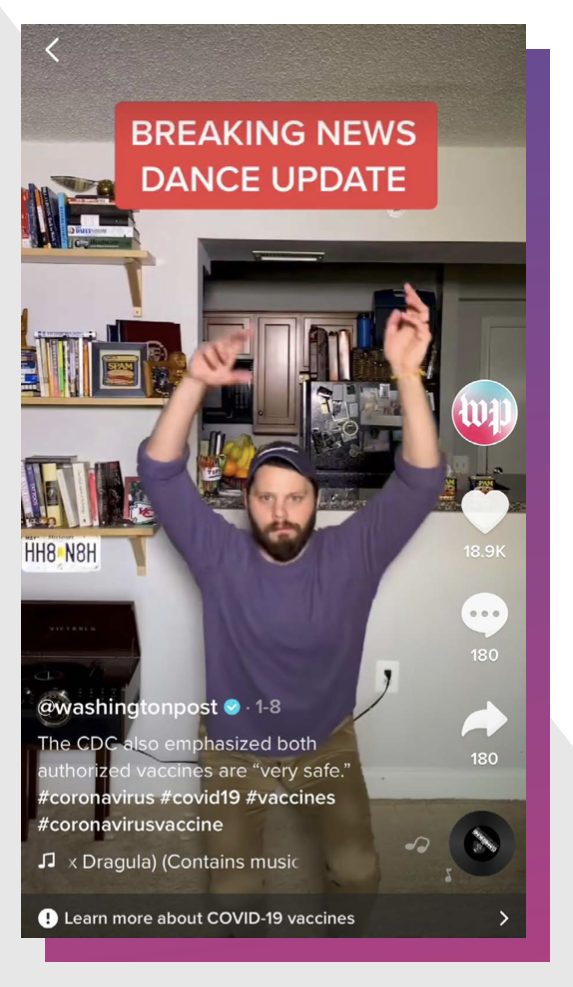
TikTok is another example. This platform came to break our “filter bubble” and how people behave on social media. It is a place where users don’t feel the pressure to produce the best version of themselves. TikTok requires you to throw away the rule book. You no longer have to behave like advertisers but like users.
So take off the tie and kick back. You don’t always need to have strict guidelines. Instead, focus on your message and taking a unique spin on trending videos, sounds, and filters. Whatever you do, be authentic. Users are not interested in being sold to; they are here for entertainment.
To learn more about how you can reach new audiences and scale your business to new heights by using authentic and inspiring content, have a look at the Raw vs. Polished Social media Aesthetics Guide.
5. Do filter influencers when selecting.
Don’t focus too much on vanity metrics like follower counts. Typically, the main factors brands consider when selecting influencers include: look and feel of the influencer’s content, impression, and engagement rate. Along with all of that, we recommend focusing on their audience.
What does the influencer’s audience find relevant? Why does the audience trust this influencer? It is imperative when finding the perfect influencer match for brands. Content is always first. By using AI-based image recognition systems, we can have an accurate visual analysis of millions of data points that helps determine which influencers have the highest probability of driving the most engagement when they talk about a product or similar products.
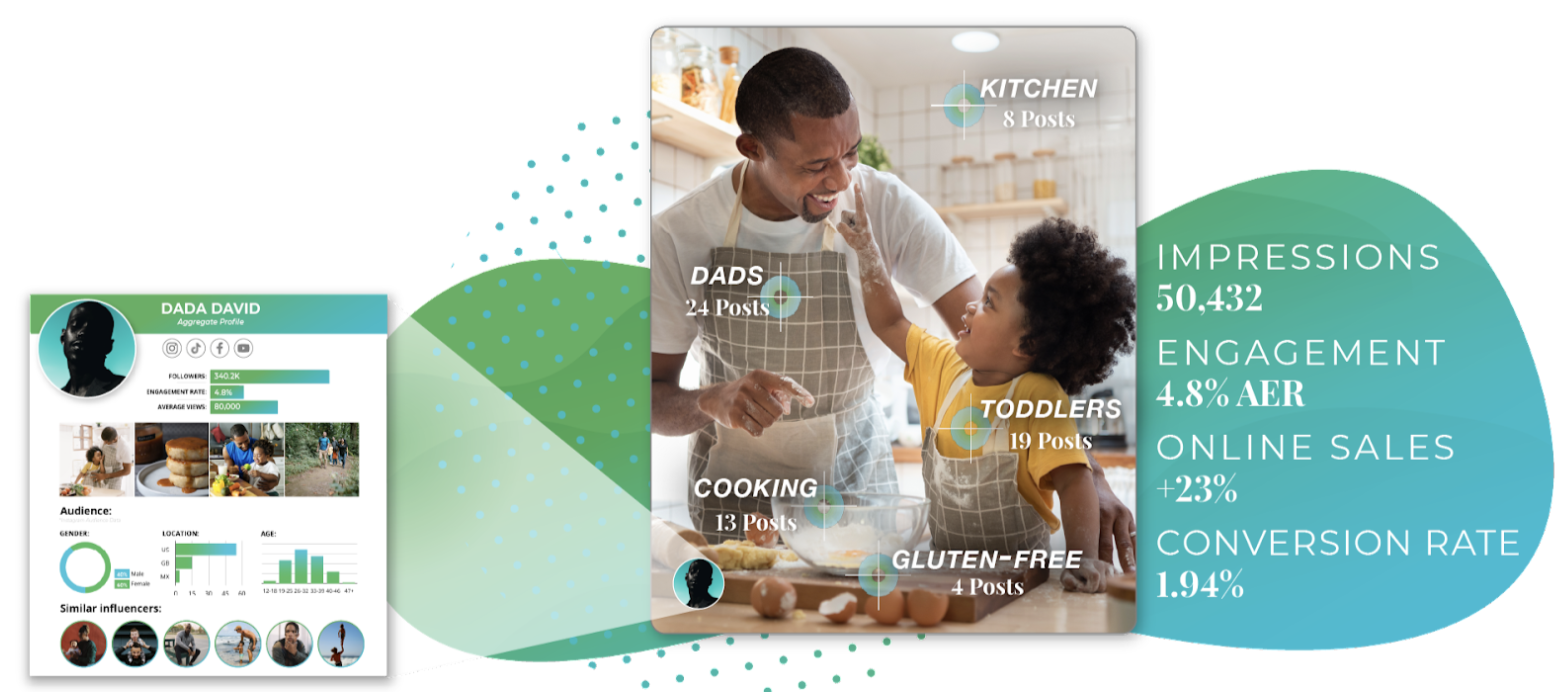
6. Don’t underestimate the power of brand ambassadors.
Businesses have worked with ambassadors since the early days of advertising. Think of these memorable partnerships: Michael Jackson for Pepsi or Michael Jordan for Nike. In today’s digital world, we have seen the rise of a new type of brand ambassador: everyday consumers who genuinely share their day-to-day experiences with the brands they love. They are paid to not only talk about a company but represent it in the long-term as a spokesperson.
Weigh out what would best suit your brand’s campaign: brand ambassadors or influencers. For more on the benefits of brand ambassadors, check out this ultimate guide for influencer marketing companies.

7. Do make a Creator Brief.
“There’s a reason why creative briefs have been a cornerstone of marketing since the industry began. A good creative brief is a virtual treasure map for your campaign, guiding talent towards the all-important X while highlighting any pitfalls along the way. Not only that but a solid brief is all but guaranteed to save you time, ensuring you don’t waste valuable man-hours reestablishing your creative vision.” – Eric Dahan, Open Influence CEO
Set clear campaign boundaries and goals. However, when that is done, sit back, watch, and be blown away by the creative storytelling that happens for you.
8. Don’t control the creative process.
Each influencer has a unique style, and their followers are fans based on the merit of their content. To ensure sponsored content doesn’t come off as transactional, hand over some of the creative freedom to the creators you are partnering with.
According to a study, 70% of all influencers feel that their honesty, openness, and humor are essential when engaging with their audience. And 77% of influencers reported they’d be more willing to repeatedly work with a brand if the brand gave them creative freedom on their projects.
Handing over creative freedom doesn’t mean handing over creative direction. It’s all about balance. With clear goals and creative freedom, you could have an effective and authentic social media campaign.
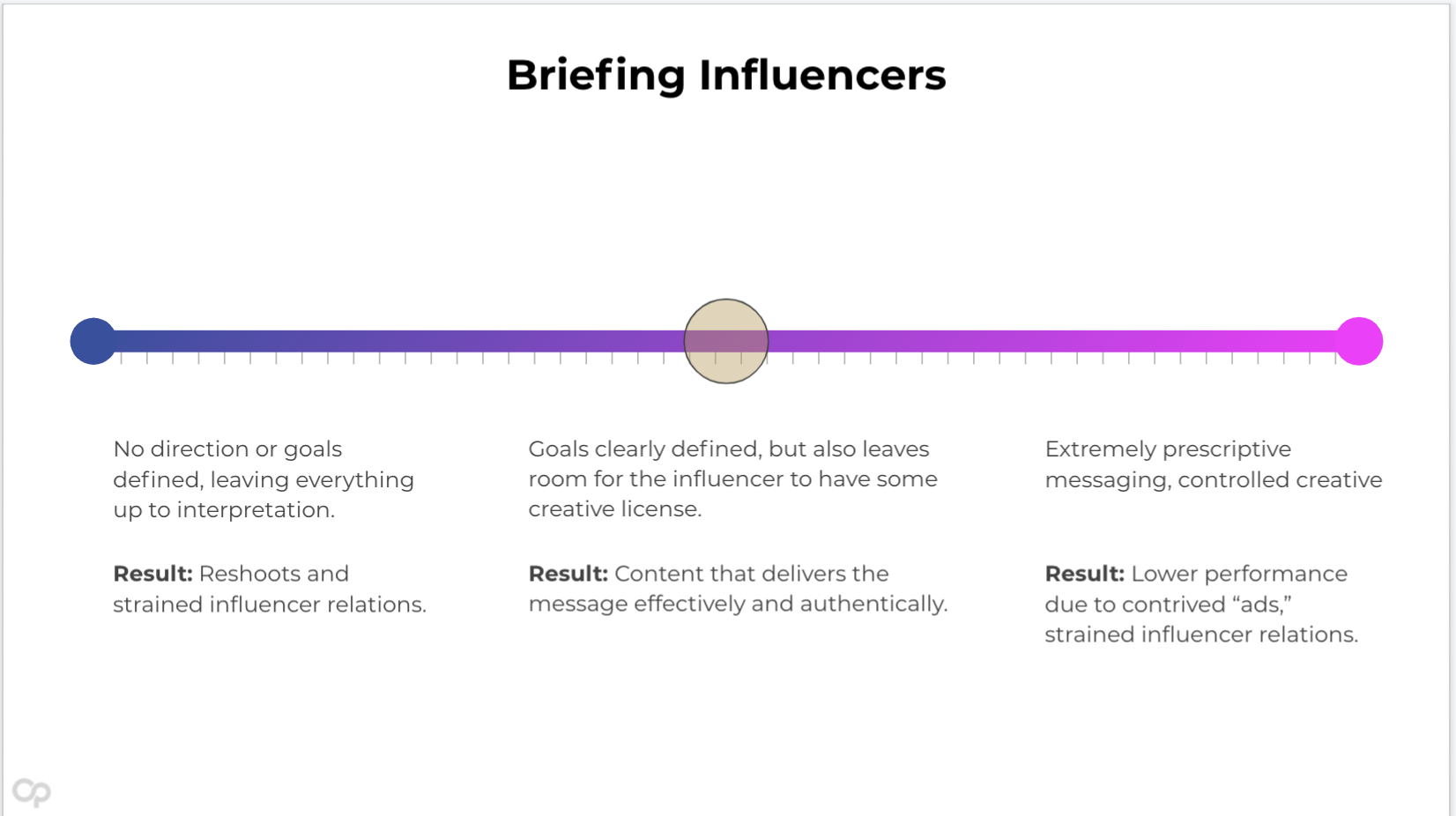
9. Do measure success.
There are numerous ways to measure success. (i.e., awareness, traffic, sales, channel followers, giveaway participants, etc.) This is why it’s crucial to establish goals and objectives first. Based on your goal, you’ll decide what your baseline metric is to measure your primary objective:
- Impressions
- Reach
- Engagement
- CPM
- CPC
- ROAS
10. Don’t forget to learn from past campaigns.
Social media is not a one size fits all tactic.
Influencer marketing is a unique experience for every brand and requires trial and error to identify which platform, audience, content format, and creative strategy resonate best with audiences.
Take the risk: Be open to testing new platforms and content formats.
Don’t get tricked by vanity KPIs: Focus on measurable KPIs that match your goals.
Lean into trust: Turn your top performers into ambassadors.
If you’re interested in reaching your audience with influencer marketing, feel free to contact us. Open Influence is a global influencer agency full of creative thinkers and social media gurus. Drop us an email at social@openinfluence.com or message us on any of our social media channels.

